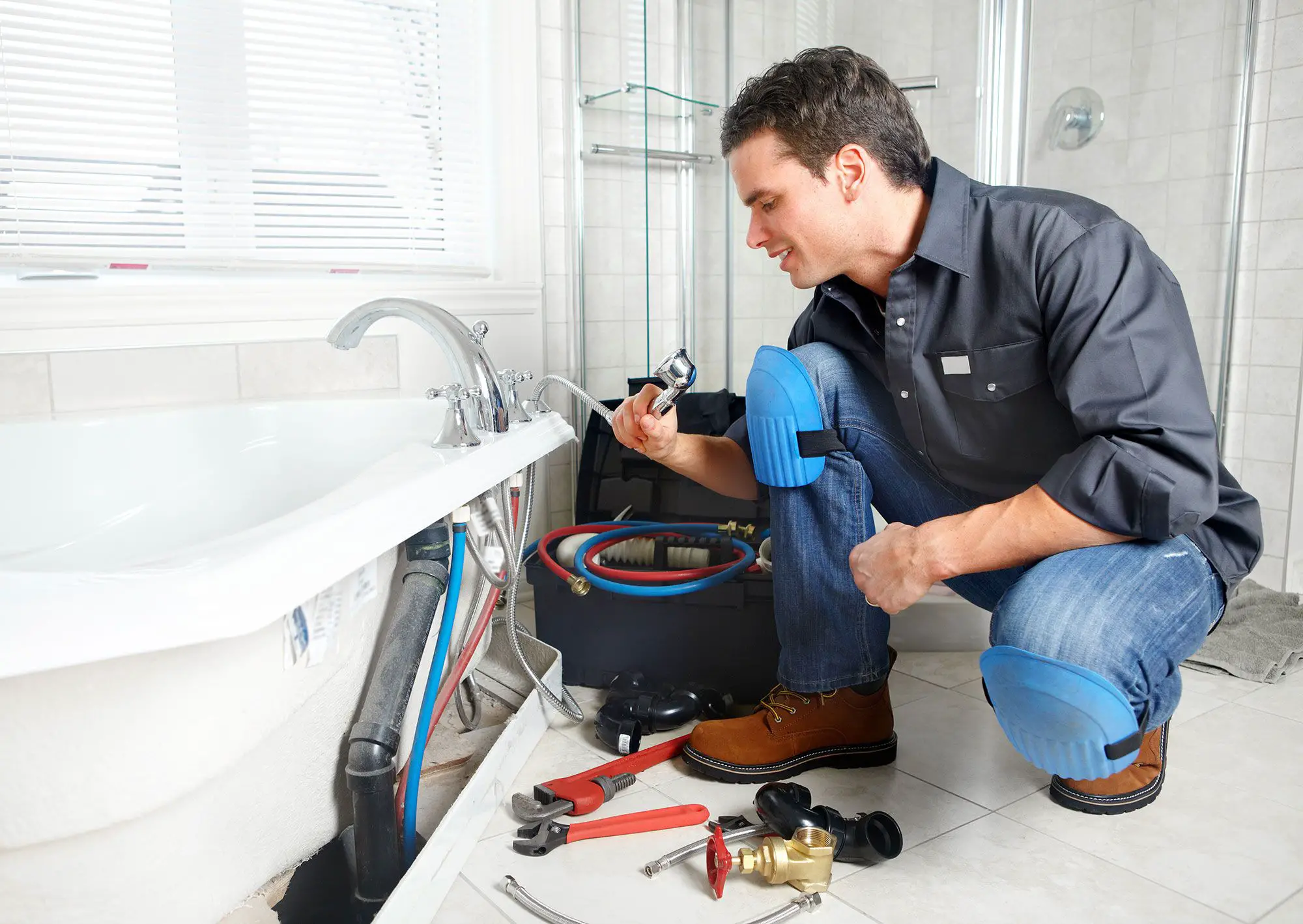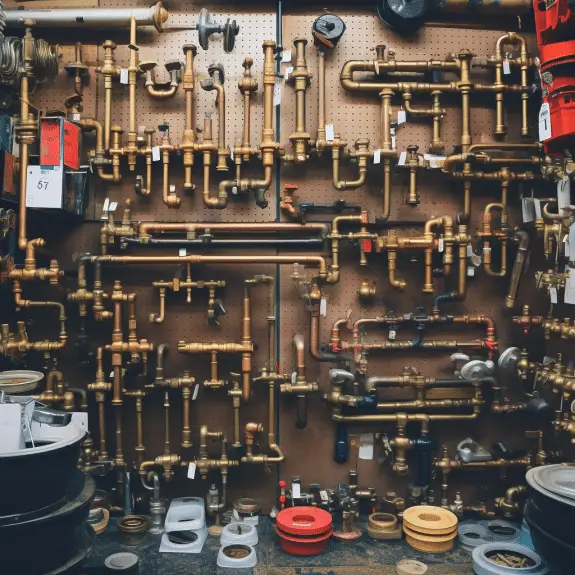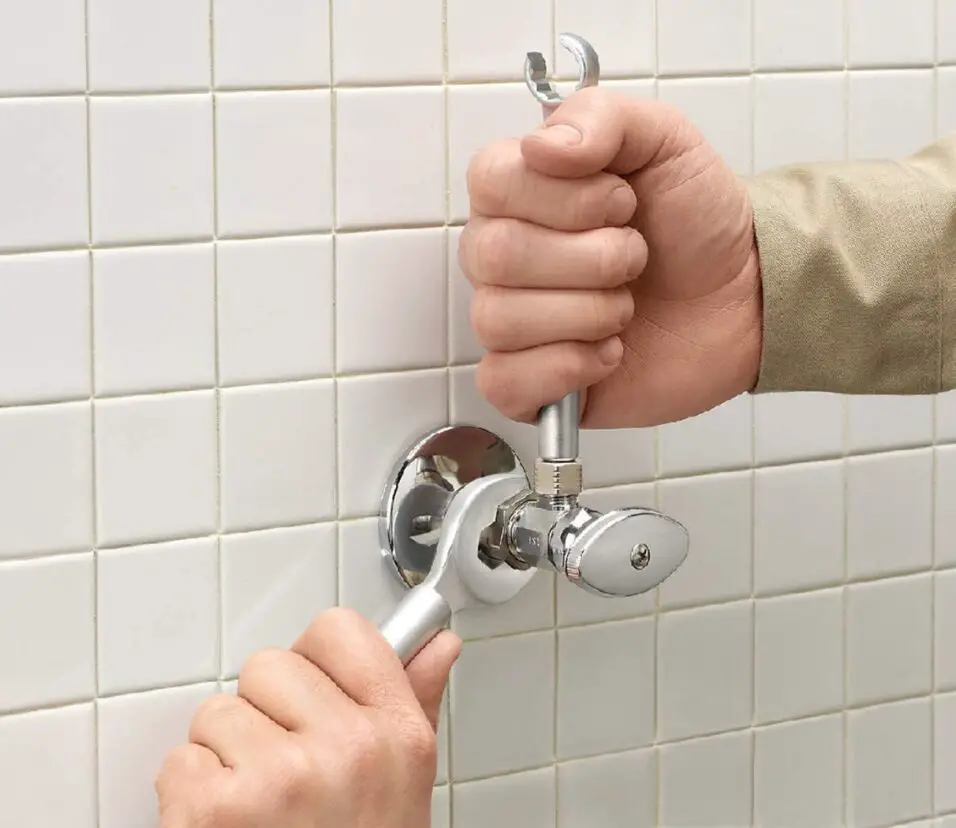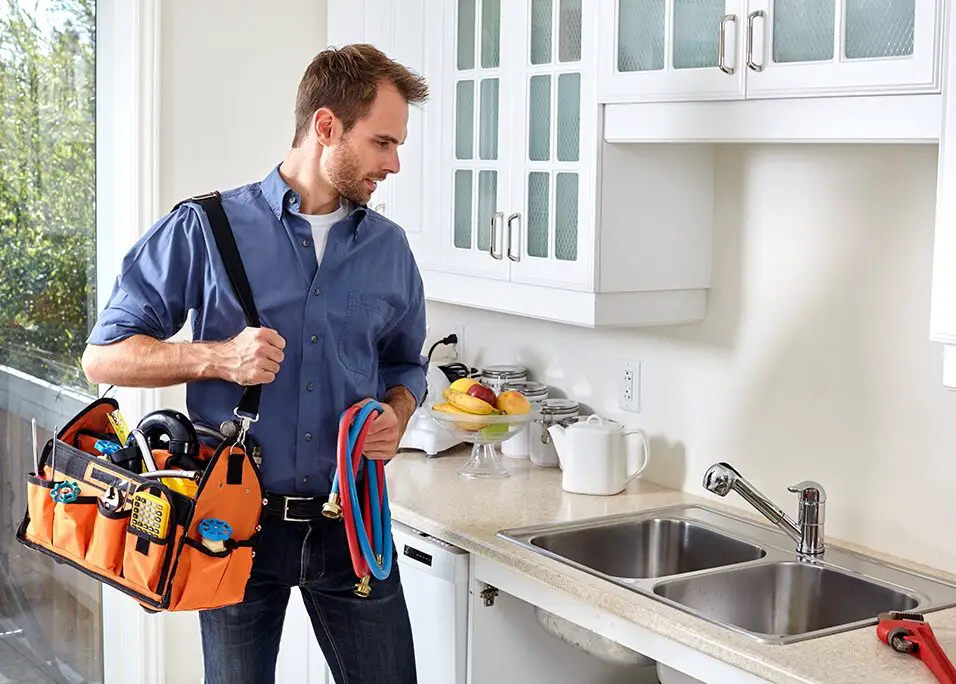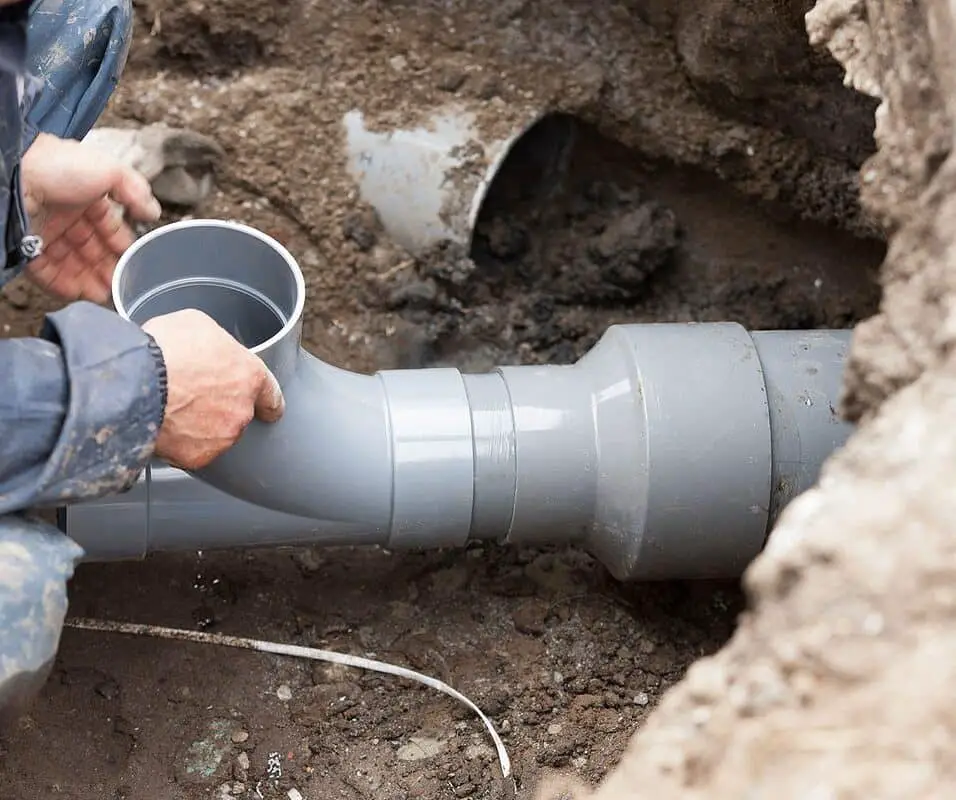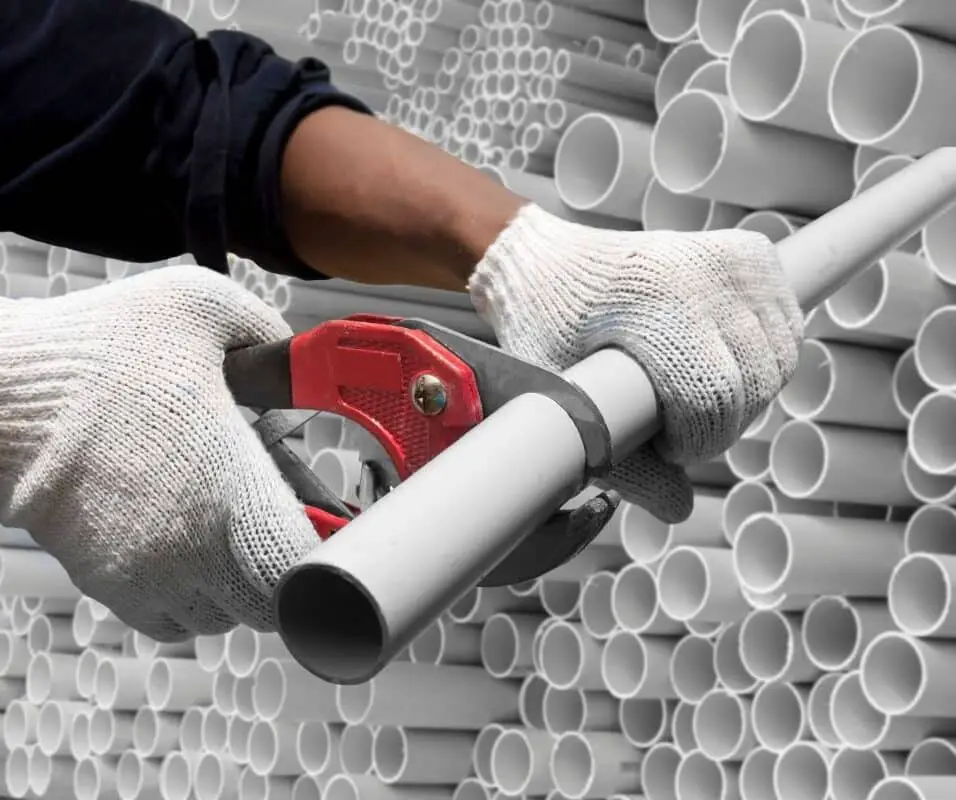What Is Water Hammer In Plumbing
Introduction
What Is Water Hammer In Plumbing: When water is flowing through a pipe, it possesses kinetic energy due to its movement. This energy allows the water to maintain a certain level of momentum. Water hammer happens when water flow changes direction when a valve opens or closes. Water flow fluctuates swiftly, causing pipe shock waves and pressure. This pressure surge can be extremely powerful, causing pipes to vibrate, shake, or even burst in extreme cases.
The banging noise associated with water hammer is the result of the pipes and other plumbing work fixtures experiencing these sudden pressure fluctuations. Water hammer can occur in both residential and commercial plumbing systems, and it is more likely to happen in systems with high water flow rates or long pipe lengths. Air pockets in the plumbing system, inadequate pipe supports, and faulty valve closing can also worsen it.
Water hammer is loud, but if ignored, it can cause severe issues. Repetitive pressure spikes can damage pipe joints and fittings, increasing leaks and pipe collapse risk. Additionally, the vibrations and movement associated with water hammer can damage other plumbing components, such as faucets, valves, and appliances.
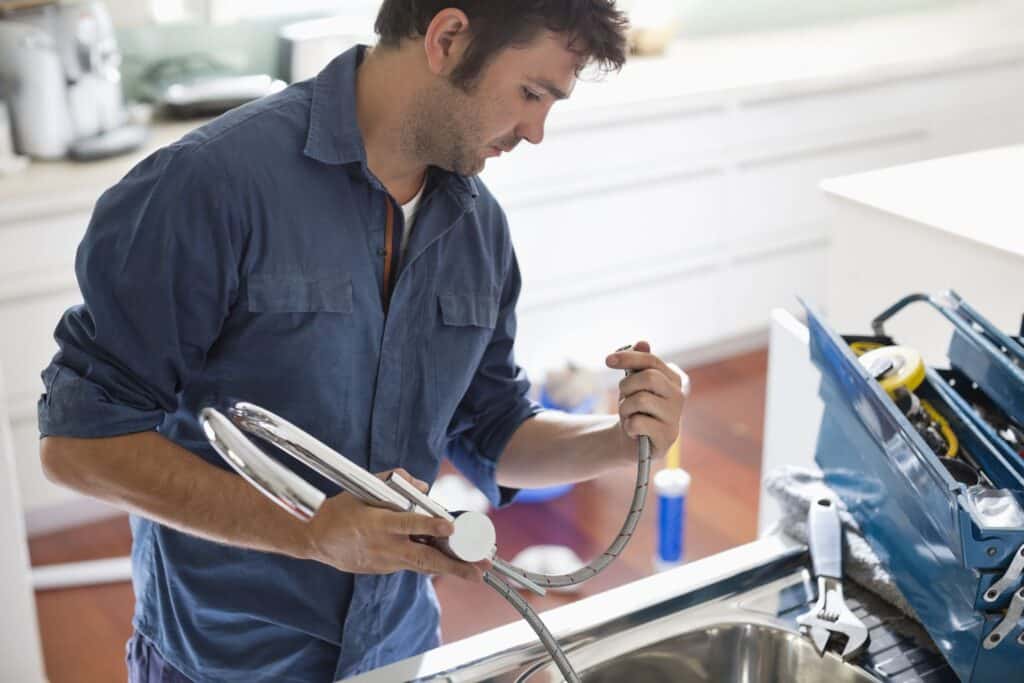
Why is it called water hammer?
Water flowing through a pipe has momentum. Closing a valve downstream of flowing water can rapidly increase pressure and cause a shock wave. This shock wave sounds like a hammer in residential plumbing.
For nearly a century, “water hammer” has appropriately described this plumbing phenomenon’s sound. It vividly depicts a powerful hit, showing the pipes’ pressure rush. Depending on plumbing system conditions, water hammer sound volume and severity can vary.
The term “water hammer” also symbolizes the potential damage if the issue is ignored. Like a hammer hitting an object, water hammer pressure spikes can damage plumbing systems. Pipe vibrations, joint and fitting failures, leaks, and pipe bursts are examples. The hammer symbol stresses the need to quickly identify and fix water hammer to prevent further damage.
While “water hammer” focuses on noise, it incorporates the disruptive effects of abrupt pressure fluctuations in plumbing systems. The name is extensively used in plumbing and describes this event.
Other hydraulic systems can experience water hammer due to rapid fluid flow changes that cause pressure surges. The word “water hammer” is most popular in plumbing.
What is water hammer and how do you fix it?
Sometimes, excessive water pressure in your pipes causes water hammer, in which case emptying the air chamber of water or installing a water arrestor offers only temporary help. To regulate the pressure, homeowners can adjust their pressure-reducing valve.
Slow down valve closure: Close valves slowly to reduce water hammer. Manual valve closure or slow-closing valves can accomplish this.
Pressure-reducing valves: Installing pressure-reducing valves can help regulate the water pressure in the plumbing system, reducing the occurrence of water hammer.
Water hammer arrestors: These devices absorb water hammer shock waves. They have a sealed air chamber that absorbs pressure surges and protects the plumbing system. Water hammer arrestors can be positioned near fixtures, appliances, or water hammer-prone regions.
Pipe insulation: Adding insulation to the pipes can help dampen the vibrations caused by water hammer. Insulation materials, such as foam sleeves or pipe wraps, can reduce the impact of pressure fluctuations.
Correcting pipe support: Ensuring that pipes are adequately supported and securely fastened can minimize their movement and reduce the effects of water hammer. Adding additional pipe clamps or brackets at appropriate intervals can help stabilize the plumbing system.
What is the function of water hammer?
A hydraulic ram uses the water hammer effect to pump water by converting a water pressure head at a high flow rate to a higher pressure head at a low flow rate. The water hammer effect can also detect leakages in a pipe and detect enclosed air pockets.
Indicating issues: Water hammer can serve as an indicator of underlying issues within the plumbing system. The loud banging or knocking noises are a clear sign that something is amiss. These noises draw attention to potential problems such as improperly functioning valves, excessive water pressure, or loose pipe supports. By addressing the water hammer, it becomes an early warning sign that prompts homeowners or plumbers to investigate and rectify the root cause.
Stress testing: While not intentional, water hammer can inadvertently stress test the plumbing system. The sudden pressure surges and vibrations caused by water hammer can help identify weak points or areas that are prone to failure. If the plumbing system can withstand the stress of water hammer without experiencing leaks or bursts, it indicates that the system is robust and properly designed. Conversely, if water hammer leads to frequent pipe failures, it highlights areas that require reinforcement or improvement.
Promoting system optimization: Water hammer can also drive the optimization of the plumbing system. To address the issue, homeowners or plumbers may implement measures such as installing water hammer arrestors, adjusting valve closure rates, or regulating water pressure. These actions not only resolve water hammer but also enhance the overall performance and efficiency of the plumbing system. Optimizing the system to prevent water hammer improves water conservation, plumbing wear, and water reliability.
What are two causes of water hammer?
Fast faucet turns off or solenoid valves cease water flow, shaking high-pressure water pipelines.
Rapid Valve Closure: One of the primary causes of water hammer is the sudden closure of a valve. A faucet or valve controlling water flow to a specific location or appliance abruptly stops water flow when closed swiftly. Water movement is abruptly stopped, causing pipe pressure to rise. This sudden shift in water flow causes shock waves to travel through the plumbing system, creating vibrations, rattling, and water hammer.
The severity of water hammer resulting from rapid valve closure depends on various factors, including the speed of closure, water velocity, pipe length, and system pressure. The greater the water flow and the faster the valve is closed, the more pronounced the water hammer effect becomes.
Water Pressure Fluctuations: Fluctuations in water pressure can also trigger water hammer. If the water pressure in the plumbing system experiences sudden changes, either due to external factors or system operations, it can lead to pressure surges and subsequent water hammer.
Water pump operation: When a water pump starts or stops abruptly, it can create pressure variations in the plumbing system, inducing water hammer.
Water supply interruptions: When municipal water pipes are cut off for maintenance or repairs, pressure fluctuations can occur when the supply is restored. The sudden rush of water into the system can generate water hammer effects.
What is water hammer damage?
Water hammer can cause serious damage to pipelines, pipe joins gaskets, and all other components of the system like flow meters and pressure gauges. On contact, these pressure spikes can easily exceed five to ten times the working pressure of the system, placing a tremendous amount of stress on the system.
Pipe and Fitting Damage: The repeated pressure surges and vibrations associated with water hammer can weaken pipes and fittings over time. The forceful impacts can lead to pipe movement, loosening joints and connections. This can result in leaks or, in more severe cases, pipe bursts, leading to water damage and potential flooding within the property.
Joint and Seal Failure: Water hammer can put excessive stress on pipe joints and seals. The sudden pressure surges can cause the seals to deteriorate or fail, resulting in leaks. This can lead to water wastage, increased water bills, and potential damage to surrounding structures, such as walls or floors.
Appliance and Fixture Damage: Water hammer can negatively impact appliances and fixtures connected to the plumbing system. The intense pressure fluctuations can damage valves, faucets, and other plumbing components. Constant exposure to water hammer can lead to premature wear and tear, reduced efficiency, and the need for frequent repairs or replacements.
Noise and Vibration Disruption: While not directly causing physical damage, the loud banging or knocking noises associated with water hammer can be highly disruptive. The constant noise can be irritating and disturb occupants of the property. Additionally, the vibrations caused by water hammer can result in rattling or shaking of pipes, leading to further annoyance and potential damage to surrounding structures.
What is used to eliminate water hammer?
If that’s the case in your home, you’ll need a water hammer arrestor. These devices are small air-filled pipes that screw onto tees that are soldered onto your pipes. They use a built-in piston to compress air to help reduce the shockwave created by closed valves.
Air Chambers: Air chambers serve a similar purpose to water hammer arrestors. Air-filled vertical plumbing parts mitigate seismic waves. Vertical air chambers near fixtures or appliances capture air at the top and cushion pressure variations. However, air chambers can lose their efficiency over time as the air dissolves into the water, needing periodic air recharging.
Pressure-Reducing Valves: Excessive water pressure can contribute to water hammer. Installing pressure-reducing valves helps regulate and maintain a consistent water pressure throughout the plumbing system. These valves work by reducing the incoming water pressure to a desired level, preventing sudden pressure spikes that can lead to water hammer.
Gradual Valve Closure: Rapid valve closure is a common cause of water hammer. Water hammer can be reduced by progressively closing valves. Slow-closing valves or human control can reduce pressure surges by progressively restricting water flow.
What is an example of water hammer?
Simply turning off a shower quickly sends a loud thud through the house; this is a perfect example of a water hammer.
When the valve closes, water momentum stops, forcing pipe pressure to rise quickly. The plumbing system vibrates and knocks when shock waves from this pressure surge travel. The house-wide noise indicates water hammer.
The severity of the water hammer effect can vary depending on factors such as the water flow rate, the speed of valve closure, and the length and condition of the plumbing pipes. In some cases, the vibrations and pressure surges can be strong enough to shake the pipes or cause noticeable movement in nearby fixtures.
This example illustrates how the sudden closure of a valve, such as the toilet valve in this case, can lead to water hammer. It highlights the importance of controlling water flow and valve closure rates to prevent or minimize the occurrence of water hammer in plumbing systems. Reduce water hammer and plumbing system damage by gently closing the valve or using slower-closing devices.
Does water hammer increase pressure?
Water hammer, or hydraulic shock, occurs when liquid in a conduit suddenly changes direction or velocity. Water hammer can rupture pipes or destroy flow control systems due to high pressure.
When a valve closes quickly or water flow direction changes, water momentum stops. This rapid cessation converts water’s kinetic energy into potential energy, increasing pipe pressure. The pressure surge temporarily raises pressure throughout the plumbing system.
The intensity of the pressure increase caused by water hammer depends on several factors, including the speed of the valve closure, the velocity of the water flow, the length and diameter of the pipes, and the overall system pressure. The faster the valve is closed or the higher the water flow rate, the greater the pressure surge will be.
Water hammer can cause pressure increases, it is typically a transient phenomenon. The pressure surge lasts only for a brief period before dissipating. However, even this temporary increase in pressure can have negative effects on the plumbing system if it occurs repeatedly and with significant intensity.
The pressure increase resulting from water hammer can lead to several potential issues within the plumbing system. It can strain pipes, fittings, and joints, increasing the risk of leaks or even pipe bursts. The heightened pressure can also cause damage to valves, faucets, and other plumbing components.
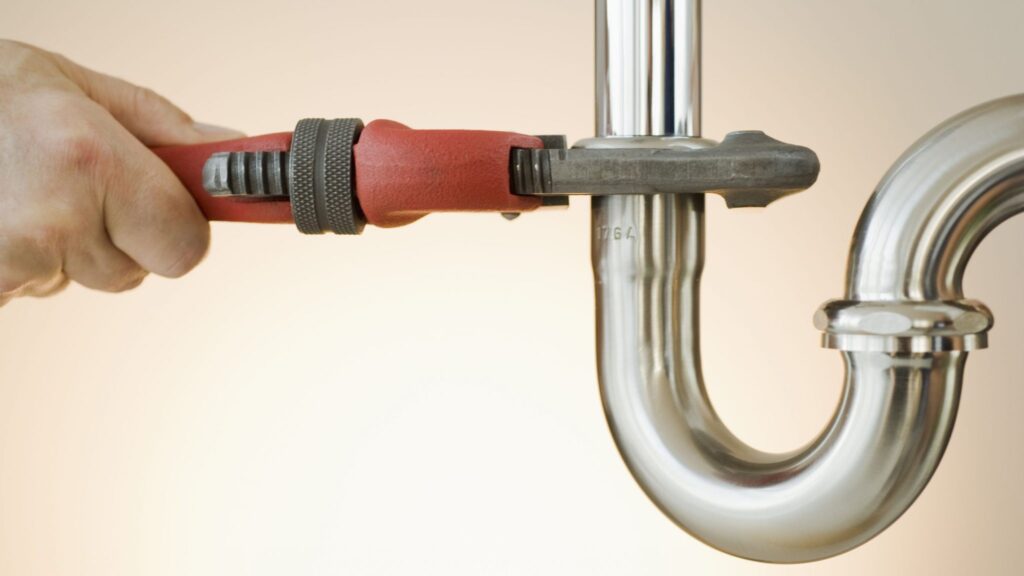
Conclusion
Water hammer is a significant issue in plumbing systems that can lead to disruptive noise and potential damage if left unaddressed. When water flow velocity is unexpectedly disturbed, pressure surges and loud slamming or knocking noises result. These pressure fluctuations can cause pipes to vibrate, shake, or even burst, leading to leaks and other plumbing failures.
Understanding the causes and consequences of water hammer is crucial for maintaining a well-functioning plumbing system. Implementing preventive measures, such as installing air chambers or water hammer arrestors, can help absorb the shock waves and minimize the occurrence of water hammer. Additionally, ensuring proper pipe support, valve operation, and gradual changes in water flow can further reduce the risk of water hammer.
By promptly addressing water hammer, homeowners and professionals can prevent potential damage to pipes, fittings, and other plumbing components. Regular maintenance and monitoring of the plumbing system can help identify and rectify any issues related to water hammer before they escalate. Taking proactive steps to mitigate water hammer will contribute to the longevity and efficiency of the plumbing system.



